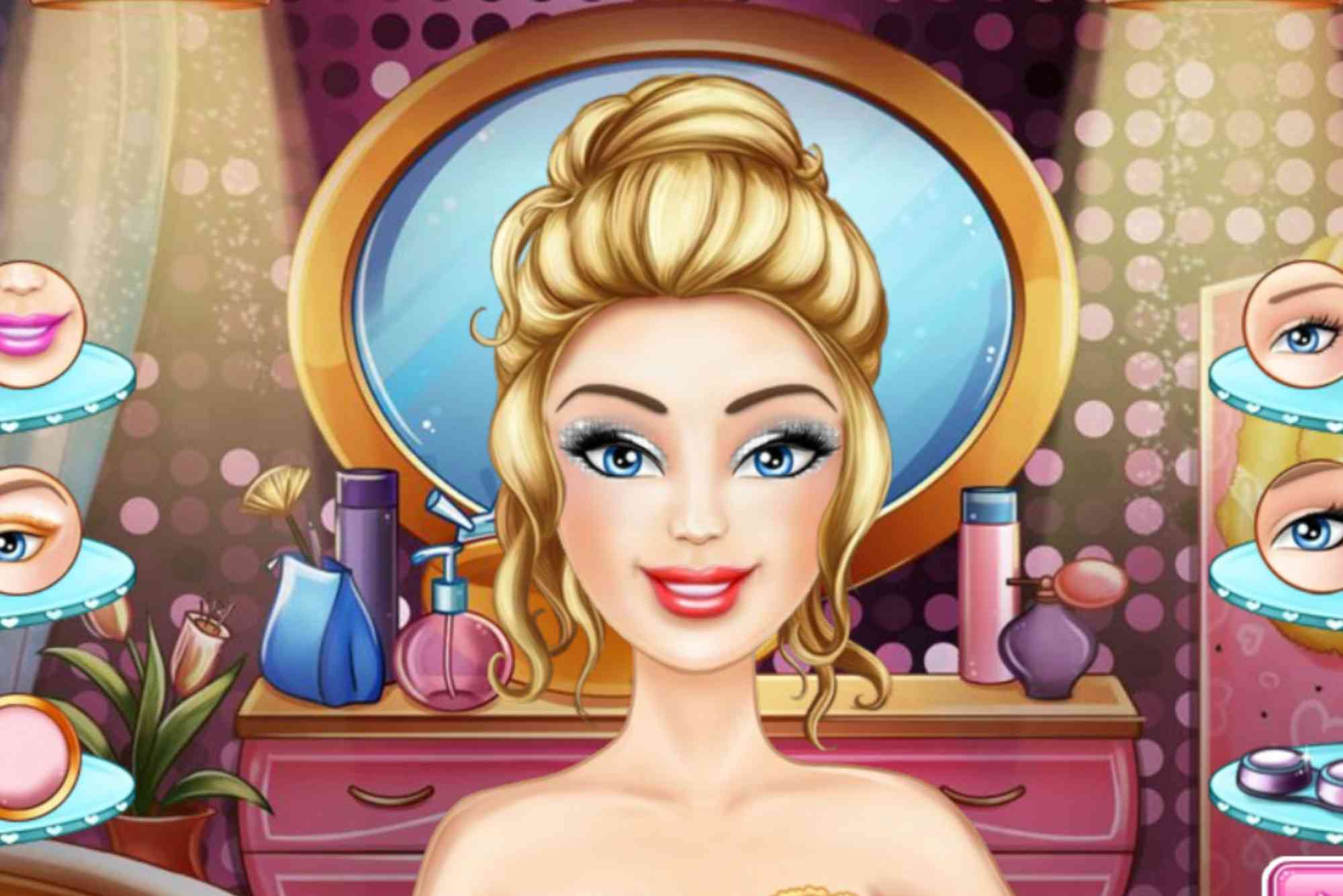Virtual Glam: Why Beauty Parlour Games Are Trending
The beauty parlour game phenomenon is more than just virtual makeovers and colorful nail art. It’s a growing digital trend that blends creativity, self-expression, and stress relief—especially among teens, children, and even adults. These games are popping up everywhere—from mobile apps to desktop platforms—and their popularity shows no sign of slowing down.
In a world where beauty is being reimagined online, virtual beauty parlour games have found their spotlight. Let’s explore what makes them so appealing, why they’re trending, and how they’re changing how we view digital beauty.
The Rise of the Beauty Parlour Game
Beauty Goes Digital
Beauty has always been about expression, identity, and transformation. But with technology evolving, beauty experiences are no longer limited to real-world salons. A beauty parlour game allows players to experiment with styles, colors, and tools in a no-risk environment. You can try vibrant hair dyes, intricate makeup styles, and bold nail designs—all with just a tap or swipe.
The digital realm removes limitations like budget, fear of mistakes, or social judgment. It gives users freedom to play, create, and explore new looks they might never try in real life.
Pandemic Acceleration
During the pandemic, salons closed and people turned to DIY beauty and virtual experiences. This shift boosted interest in beauty-related mobile apps and games. With fewer real-world interactions, beauty parlour games became a creative outlet and social escape.
Today, even as life returns to normal, the trend persists. Many users still turn to their favorite beauty parlour game to unwind or engage their imagination.
Why Beauty Parlour Games Are So Popular
A Creative Outlet for All Ages
Whether you’re a child playing dress-up or a teen experimenting with fashion, a beauty parlour game provides an engaging, judgment-free space to explore creativity. These games don’t just offer makeup and hair options—they encourage design thinking, aesthetic choices, and even time management when tied to salon simulation gameplay.
Instant Gratification
In a few seconds, you can apply makeup, change hairstyles, or decorate nails. The immediate results are satisfying and fun. Unlike real beauty routines, which require time, money, and patience, these virtual experiences offer beauty on demand.
Stress Relief and Entertainment
Much like coloring books or puzzles, beauty parlour games can be surprisingly relaxing. The repetitive, creative tasks calm the mind. Many users play them as a way to de-stress after school or work. They offer a soothing distraction that blends routine with artistry.
Social Sharing and Trends
Many apps let users save and share their creations. On TikTok, Instagram, and YouTube, you’ll find countless beauty game clips with hashtags like #MakeupGame or #BeautyParlourGame. Influencers even rate or review games, spreading the trend further.
When users see their peers engaging with these games or posting virtual looks, they want to try it too—boosting popularity through word of mouth and online communities.
Features That Make Beauty Parlour Games Stand Out
Realistic Graphics and Tools
Modern beauty parlour games boast impressive visuals and tools that closely mimic real-life makeup and salon equipment. You’ll find realistic blush brushes, curling irons, nail polish applicators, and even eyebrow shapers. This realism enhances immersion and makes the experience more enjoyable.
Variety and Personalization
Most beauty games offer a wide range of skin tones, face shapes, hair textures, and makeup styles. This inclusivity lets users feel represented and encourages deeper engagement. You’re not just putting makeup on a generic model—you’re styling someone who might look like you.
Customization options also allow users to personalize avatars and create signature styles. This sense of ownership boosts emotional connection to the game.
Frequent Updates and Themed Content
Game developers keep users engaged by offering frequent content updates—seasonal looks, celebrity-inspired challenges, or trending makeup styles. These updates reflect real beauty trends and help the game feel relevant and dynamic.
Interactive Gameplay
Some beauty parlour games combine simulation elements like running a salon, managing clients, or completing makeover challenges. This gamification adds depth and encourages long-term play. It’s not just about makeup—it’s about building a business, unlocking achievements, and progressing through creative levels.
Educational and Developmental Benefits
While many may think beauty parlour games are just light entertainment, they offer more than meets the eye—especially for younger players.
Builds Creativity and Visual Thinking
From color matching to design combinations, these games encourage visual planning and aesthetic judgment. Players learn how different elements work together, developing their sense of style and creativity.
Enhances Motor Skills
For younger children, tapping, swiping, and dragging tools in a beauty parlour game helps develop fine motor skills and hand-eye coordination.
Encourages Planning and Decision Making
Choosing a look, planning a makeover, or managing time in a salon game teaches players to make thoughtful decisions. These are basic cognitive skills that apply to real-life scenarios as well.
Market Growth and Industry Trends
The mobile gaming market continues to grow, and beauty parlour games are a strong niche within it. Games like Makeup Artist, Hair Challenge, and Beauty Spa Salon have millions of downloads.
More developers are investing in high-quality beauty games that combine fashion, lifestyle, and interactive features. In-app purchases for premium makeup tools, outfits, or ad-free experiences also make these games profitable.
Brands are also entering the space. Beauty companies collaborate with game developers to promote new products or campaigns. Virtual try-ons in games act like digital samples, influencing real-world purchasing behavior.
What Makes a Good Beauty Parlour Game?
Easy to Use Interface
The best beauty parlour games are intuitive and accessible to users of all ages. Clear navigation, responsive tools, and minimal clutter make for a better user experience.
Wide Customization Options
Games that allow users to customize avatars, save looks, or use different ethnic features are more appealing and inclusive.
Free and Premium Balance
Successful games offer a great free experience while giving the option to upgrade. This balance allows players to enjoy without pressure but rewards those who want more.
No Aggressive Ads
Games filled with pop-up ads frustrate users and lead to poor reviews. The best beauty parlour game experiences are lightly monetized without interrupting the flow.
The Future of Beauty Gaming
As augmented reality and AI technology evolve, beauty parlour games will likely become even more immersive. Expect real-time virtual try-ons, voice-activated beauty tutorials, or AI-customized makeup plans in future versions.
There may also be stronger links between digital and physical beauty experiences. Imagine designing a look in a game and receiving a product bundle in real life to match it.
The future is bright—and beautifully gamified.
FAQs About Beauty Parlour Games
What is a beauty parlour game?
A beauty parlour game is a digital simulation where players can perform virtual makeovers, hairstyles, and beauty treatments using interactive tools.
Are beauty parlour games only for kids?
No. While popular with children, many teens and adults enjoy beauty parlour games for relaxation, creativity, and entertainment.
Can I play beauty parlour games offline?
Yes, many beauty parlour games are available offline, though some features like updates or social sharing may require internet.
Are these games safe for children?
Most beauty parlour games are designed with child-friendly content, but always check ratings and parental controls to ensure age-appropriateness.
Do beauty parlour games influence real-life beauty habits?
They can. Many users gain inspiration for real-life looks or become more interested in beauty careers after playing regularly.





